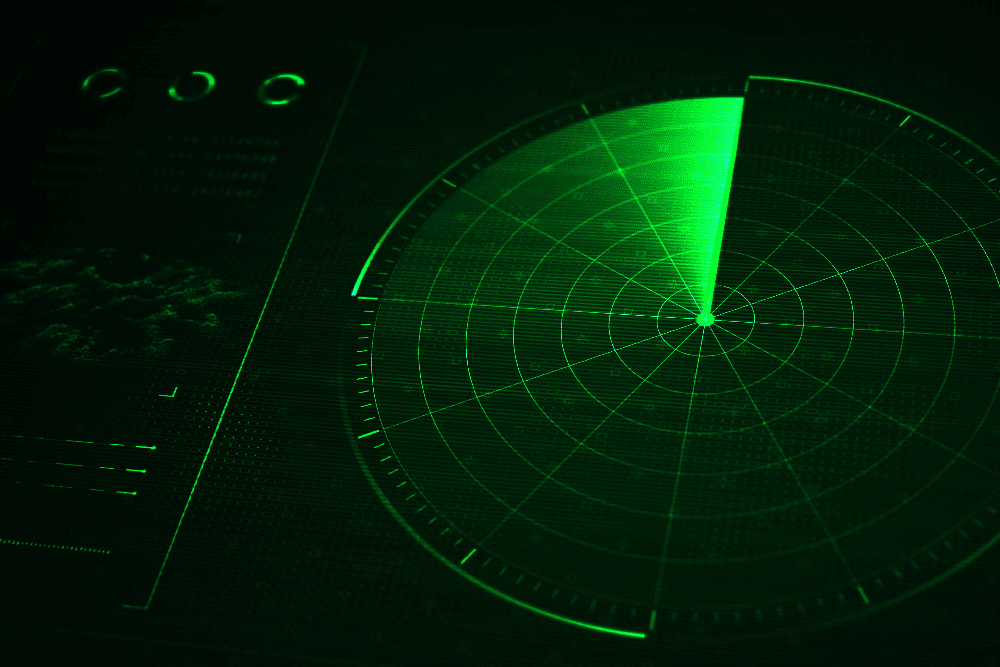Introduction
A manufacturer of multi-purpose radar detection systems was in the market for precision climate control that could protect sensitive equipment from hostile surroundings. The company retained Air Innovations to build a customized environmental control unit (ECU) that could maintain pristine temperatures amid unpredictable ambient conditions.
The Challenges
Radar detection systems operate in any environment during any time of year. As a result, Air Innovations had to overcome several challenges to protect sensitive equipment.
First, the ECU would need to keep up with a radar system that ran continuously with short bursts of high power. Oscillation would happen at unpredictable times, requiring a climate control unit that could tolerate temperature spikes when the radar equipment was activated.
Second, the client’s radar systems would be exposed to unrelenting sun and heat or darkness and cold. The ECU would need to be able to operate without fail in these hostile ambient conditions to protect radar systems from these extreme climate conditions.
Ease of use was another important consideration when customizing a solution since these portable radar systems would need to be set up quickly once transported to a location. This meant that remotely operating the ECU was also essential.
Finally, the custom climate control solution would need to fit within narrow space constraints. Unlike commercial HVAC systems that can be obtrusive, Air Innovations would have to adhere to strict ergonomic requirements since the radar systems were portable. Designing a durable ECU was just as important as its cooling function.
The Solution
Air Innovations engineered, manufactured, and tested a custom ECU configured to recirculate conditioned air to the client’s radar pedestal.
The unit operates in ambient conditions between -30℉ (-34℃) to 120℉ (49℃). Crank-case heaters keep the refrigeration components, like the compressor, warm. Secondary heating elements protect the electronics within the ECU from extremely cold conditions. A thermostat monitors the ambient temperature and signals the heaters to kick on to keep the electronics warm, so the ECU is ready to protect the radar system from oscillatory loads. The supplemental heater plugs into the power supply.
The cabinet and all internal metal components are powder-coated aluminum, and all hardware is stainless steel to make the unit sound for outdoor use. The ECU is painted high gloss to absorb some ambient heat and also reflect it as needed.
The unit was packaged to facilitate quick set-up. It sits on a cart with wheels and handles to be moved like a wheelbarrow. Two people can grab handles on the sides of the ECU to easily maneuver the unit on the back of a truck with the radar. Clamps and insulated ductwork support quick installation.
The unit is equipped with ethernet connection so an operator can cool or heat the radar from a remote location up to 50 feet away.
To meet stringent ergonomic requirements, Air Innovations designed a single-piece horizontal ECU mounted to the exterior of the radar system and ducted to and from the pedestal.
The Results
The environmental control unit included the following:
- The ability to operate in specified ambient conditions -30℉ (-34℃) to 120℉ (49℃)
- The capacity to control temperatures above 60℉ (16℃) in cooling mode and below 40℉ (4℃) in heating mode
- 90-150 CFM design airflow
- 8” WC external static pressure
- Air-cooled condenser
- 2KW electric heater
- Powder-coated aluminum and stainless-steel construction
- Hot gas bypass refrigeration control
- Nominal 1 ton R-134a Scroll Compressor
- Ethernet connection for all controls to be run from the client
- A design that meets or exceeds UL standards
If you’re ready for a custom solution from Air Innovations, like these custom environmental control units, contact us by submitting a Project Inquiry or calling 1-800-835-3268 today.
For case studies on other industries, view our general case studies page. We also have whitepapers covering the aerospace industry, semiconductor industry, and MyZone Systems product line. The whitepaper page can be found here.


